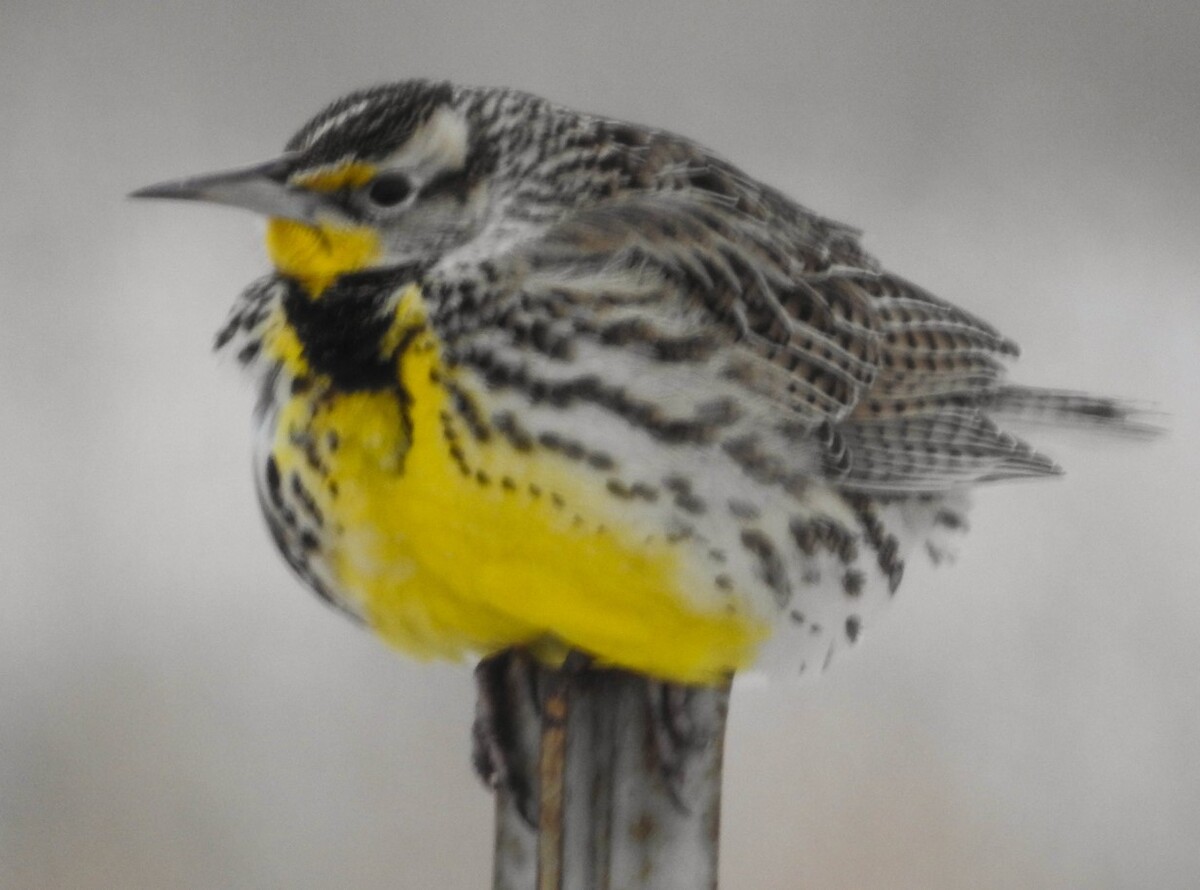Winter 2021 Trip to Far West Farm

As I wrote a year ago in my first blog dedicated to Far West Farm, our Audubon of Kansas Legacy Sanctuary in western Morris County, the first snow of winter is always an exciting time. Snow affords an opportunity to document what wildlife are present on our two parcels along Clarks Creek.
With a sense of adventure in mind, I headed south from our home in Manhattan and then took the Hwy 77 exit off I-70 south towards Herington. At the point where Hwy 77 doglegs southwest to follow the Morris-Dickinson County line, I turned onto 2800 Road and traveled due south. Several miles later I came to a closeup view of Clarks Creek, just north of the confluence of the south and east forks. A flash of white among the trees lining the watercourse caught my eye and I focused on an adult Bald Eagle as it flapped from the stream’s surface and landed in a tree. I thought for a moment about how amazing it was to be casually seeing a once-threatened Bald Eagle in such a familiar place.
I drove toward our southerly parcel of land--eager to walk along our Conservation Reserve Program (CRP) strip in hopes of finding some quail. Shortly after reaching Highway 4, I encountered a large flock of meadowlarks. One was particularly cooperative, as it sat on a fencepost, all fluffed up to buttress itself against the cold south wind. This was a large flock, and I recalled a recent conversation with our tenant, who had asked why there were so many meadowlarks this winter. As I snapped pictures, I heard the call of a Western Meadowlark, but it wasn’t the one in my viewfinder. My target’s true identity—Western or Eastern, we have both in the area—would be determined when I had time to review my photos. Over the course of the day I would see flocks of at least 40 meadowlarks-- perhaps 150 total--a treat considering the overall decline of prairie birds.
My walk through our CRP strip proved unproductive, with no sign of quail and no passerines of any kind. There were tracks of coyotes and deer and a large raccoon. The only surprise was seeing the tracks of two turkeys, which left me curious as to why they had left the wintering flock a mile away to wander about on our land. Tracks of mice and voles were more abundant than in the previous year, which explained why on a trip to the farm a week earlier I had seen three different Red-tailed Hawks successfully catching rodents. It is a good year for rodents…except for those grabbed by predators. After my disappointing search for birds, I drove around to the north side of our 80 acres, which lie on the other side of Clarks Creek, to where earlier in the winter I had found two heavily used burrows. Tracks in the snow confirmed my suspicions: the two burrows 20 feet apart clearly house a thriving gaze of raccoons. I wondered what animal had originally dug the burrows, which are in a location heavily infused with thick tree roots.
Halfway to our larger property, I spotted a large raptor flying with the slow wingbeat that said “eagle”. With my binoculars I confirmed: another adult Bald Eagle. I reached our northern farm, which also lies along Clarks Creek, and recovered the memory card from a trail camera I bought on Black Friday. Earlier photos had confirmed the presence of a bobcat, a coyote, a fox squirrel, a cottontail and three raccoons. (The latest effort, I found upon a download after arriving home, showed two coyotes, two deer, a possum and a raccoon.)
I searched an area where I had flushed quail a few weeks earlier and then two more areas where I had historically found quail but found none. The snow held tracks of coyotes, bobcat and raccoons, and an abundance of deer sign. I walked to one of the last best places to find quail but saw no tracks. Just as I was musing to myself that henceforth I would be telling friends that I was managing for deer, rather than quail, a covey with 15-18 birds exploded out of cover a few feet ahead of me. I had been in the same area a week earlier without seeing any quail, so I was especially pleased with my discovery.
Finding birds in heavy cover caused me to consider the possibility I had missed a covey by looking for tracks at the edge of our cutover soybean fields, rather than searching in heavy cover where I had flushed the covey. I went back to a CRP patch I had surveyed earlier in hopes of finding another group of quail. As soon as I walked into the transition zone where CRP grass meets woods a fork-horn buck bounded away. I had walked within 50 feet of it earlier with the wind obviously blowing my scent right into its nostrils, but it hadn’t spooked then. It made me wonder how many other animals and birds I might have passed that day.
On the way home I drove towards Latimer, where I had seen an eye-catching Red-tailed Hawk on recent trips. The bird is a regular on power poles west of the town, and sure enough I found it on a utility pole—no doubt keeping a sharp eye out for hapless rodents. I am not much of a chaser—a bird watcher who will drive great distances to add a new species to their life list—but I particularly enjoy seeing an exceptionally beautiful specimen of a common species or a common bird doing something unusual or in a special setting. A melanistic color variant, this bird appears to be jet black, but with a red tail, which might even be banded in black. I tried several times to get close enough for a photo but failed. I’ll try again on my next trip to Far West Farm.
